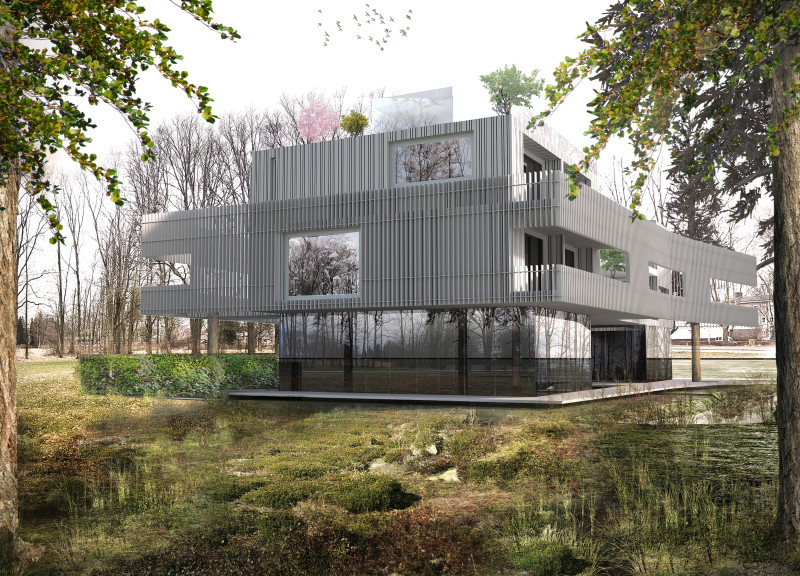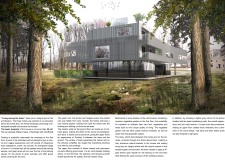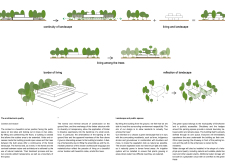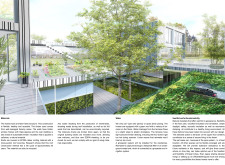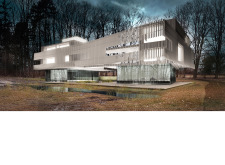5 key facts about this project
"Living among the trees" is a project located in Eindhoven that focuses on integrating homes within a forest setting. The design promotes a close relationship between residents and nature. Each dwelling sits above the ground, preserving the untouched forest floor. With a modest footprint of 25 m², the homes create space for various living arrangements while encouraging outdoor activities and community engagement.
Design Concept
The design emphasizes the idea of blending living spaces with surrounding nature. By elevating the homes, the forest landscape remains intact beneath them. This setup allows for large roof terraces and communal gardens, enhancing biodiversity and fostering a self-sufficient lifestyle for residents.
Materials and Form
The ground floor features mirrored glass walls. This choice allows the buildings to reflect their surroundings, making them less visually intrusive. Above, timber frames support the upper floors, which contain panoramic cut-outs that frame views of the forest. The combination of transparent and reflective surfaces promotes a connection between the homes and the environment.
Landscape Integration
Parking is cleverly placed beneath the first floor overhang, hiding vehicles from sight. Surrounding this area, low shrubbery includes native plants like blackthorn, privet, and red currant. These elements help the homes blend with their natural environment. The rugged appearance created by this landscaping reinforces the theme of living harmoniously with trees.
Biodiversity and Sustainability
The design encourages sustainability through communal vegetable gardens on the roof terraces, allowing residents to grow their own food. This focus on self-sufficiency enhances the local ecosystem. The project also features a greywater recycling system that uses collected rainwater for irrigation, minimizing resource use and demonstrating a commitment to environmental responsibility.
The overall design culminates in a noteworthy detail: trees are allowed to grow through the upper floors of the homes. This feature connects the living spaces to the natural surroundings, enriching the experience of residents as they interact with the forest.


